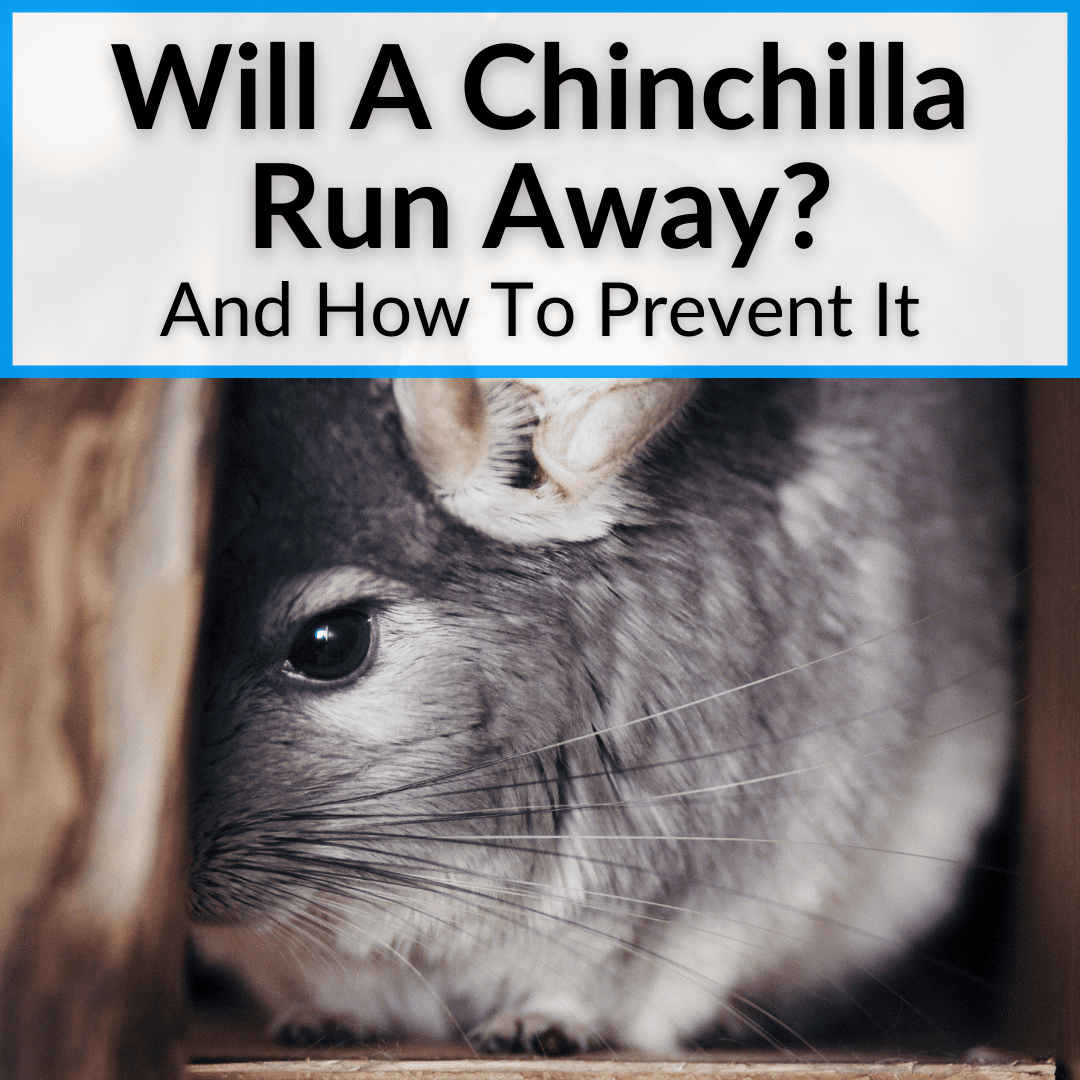
You’re tiny and the world is huge.
It is filled with animals far larger than you. And they all want to eat you.
Except for the largest of all. It wants to cut off your fur and turn it into clothing and accessories.
What would be your first instinct in just about every situation?
To run away.
So it only makes sense that chinchillas retain the instinct to run away in captivity, too. No matter how safe they are.
Keep reading to learn how common it is for a chinchilla to run away. We’ll also cover what you need to do to ensure your chinchilla does not runs away and remains safely with you.
Contents
Will A Chinchilla Run Away?
Yes, chinchillas will run away. It’s crucial to have playtime in secure areas that are danger-free. If a chinchilla gets the chance to bolt, you will have a hard time finding it. They are masters at hiding in tight, dark spots.
You might think that your specific chinchilla would never run away, because it has a wonderful life with you. I have some bad news for you.
No matter how great your chin’s life is, it will run if given the chance. It is just in their nature.
There is nothing you can do to drive this instinct out of them. Your only recourse is to deny them the means to escape.
That’s exactly what we’re going to help you with today. We’ll cover why chinchillas will run and what you need to do to prevent losing your pet in this manner.
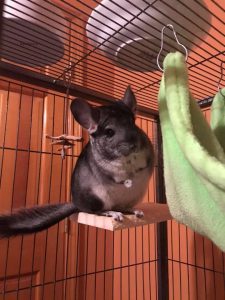
😕Adopting and caring for a new chinchilla can be intimidating and confusing. But it does not have to be.
Be sure to check out my full digital eBook “Avoiding Critical Mistakes: Ultimate Chinchilla Care eBook” for the best advice, tips, and tricks and supply recommendations to make adopting and caring for a chinchilla much more comfortable and easier to understand.
You can learn more about this eBook offer using the link directly below.
Learn more here:👉 Avoiding Critical Mistakes: Ultimate Chinchilla Care eBook Offer
Your Chinchilla Will Run Away If You Are Not Careful
It’s important to know right out of the gates that your chinchilla is a master escape artist and will try to escape regardless of how much it loves you and recognizes you as the owner and commander.
Don’t take it personally.
This is what they are naturally built to do and it’s an extremely common behavior all chinchillas exhibit. It is one way chinchillas protect themselves from predators and other dangers.
Chinchillas know how to hide extremely well and escape with ease. This is one of the main reasons I always recommend you have a chinchilla proofed room where you have playtime with your pet.
In the beginning, this can simply be a bathroom, with the toilet lid down.
We will touch on other options you can use to keep your chinchilla safe and prevent it from escaping and hiding from you later in this post.
Remember, chinchillas are expert jumpers as well and can hit heights of over 5 feet by springing off their back legs. Having a safe room to play where doors are closed can help you from having to go on a wild goose chase looking for your chinchilla.
It’s not that they necessarily want to get away from you, it’s that they are naturally curious and want to explore anything and everything. Chinchillas are a friendly and loving pet but this does not change their inability to resist the urge to check out other areas of the home.
Especially if you allow them to free-roam, which is rarely a good idea.
Would Your Chinchilla Run Away Out An Exterior Door?

If given a chance, yes. I would never risk this. If your playroom is somewhere connected to an exterior door of the house, make absolutely sure it is always shut.
Make sure nobody plans on coming or going during playtime in a manner that would present an open door to your chinchilla. If the door opens and remains open too long, it is simply too easy for your chinchilla to dart.
Once outside it will likely be impossible to get your chinchilla back. They hide quickly and with the entire world in front of them, they could be anywhere in a matter of minutes.
We will touch on how handy gates and playpens can be in preventing escapes. I used them myself when I first adopted my chinchilla 5 years ago. I still use a playpen to this day.
I had to use gates and a playpen for my chinchilla 5 years ago, because I used a non-chinchilla proofed room in my basement for playtime.
Electrical cords were still exposed, and there were just too many storage items where she could disappear. I just didn’t trust that I could find her with ease down in my own basement.
I did, however, have a good reason for choosing the basement for her resting spot.
It’s away from the rest of the noise in the house, stays nice and cool for her which can help eliminate the fear of overheating, and keeps her isolated and away from my dog.
Chinchilla Gates And Playpens Help Dramatically
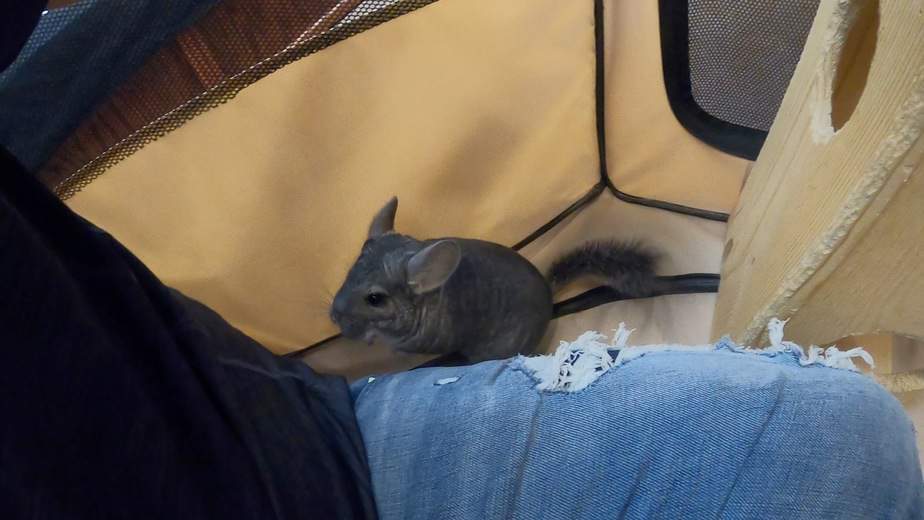
If you don’t have an enclosed playpen for your chinchilla to play in, you should seriously consider getting one as soon as possible.
Even if you have a chinchilla-proofed room.
They come in handy in many situations and I cannot stress how much my playpen has helped me.
They also help to form a closer bond with your chinchilla due to close interaction. Not to mention, your chinchilla running away should not be a huge concern if you have a playpen to use.
I highly, highly recommend the Jespet playpen. You can see it in my post about the best chinchilla playpens. It is the first one mentioned.
I purchased mine more than 4 years ago and still use it all the time, even though I now have a chinchilla-proofed room. It just works perfectly.
If you need something more similar to a gate for your chinchilla, I would recommend the Amazon Basics Folding Gate/Pen.
Now assuming you do not want to use either of these approaches to prevent your chinchilla from running away, then you still have other options.
First, consider using a bathroom. There typically aren’t any electrical cords, there is nowhere to run, and they are overall very safe. If the door is closed, you won’t have any issue using a bathroom for playtime.
If you can’t use a bathroom for playtime, just make sure you have a plan and have the room you intend on using entirely chinchilla safe.
There should be no electrical cords, or you need to cover all of the cords with cord enclosures that are sold in most home improvement stores.
You can also use two by fours or other gates to block off an area of the room to give your chinchilla more space to run. Be sure that whatever gate method you use, it’s tall enough, because chinchillas can jump very well.
My playpen is more like a big circle tent and has a screen on the top. My chin can easily touch the top of the tent. It’s 60 inches tall. It doesn’t even appear that she needs much of an effort to do it, either.
Keep The Dust Bath And Treats Ready In Case Of An Escape
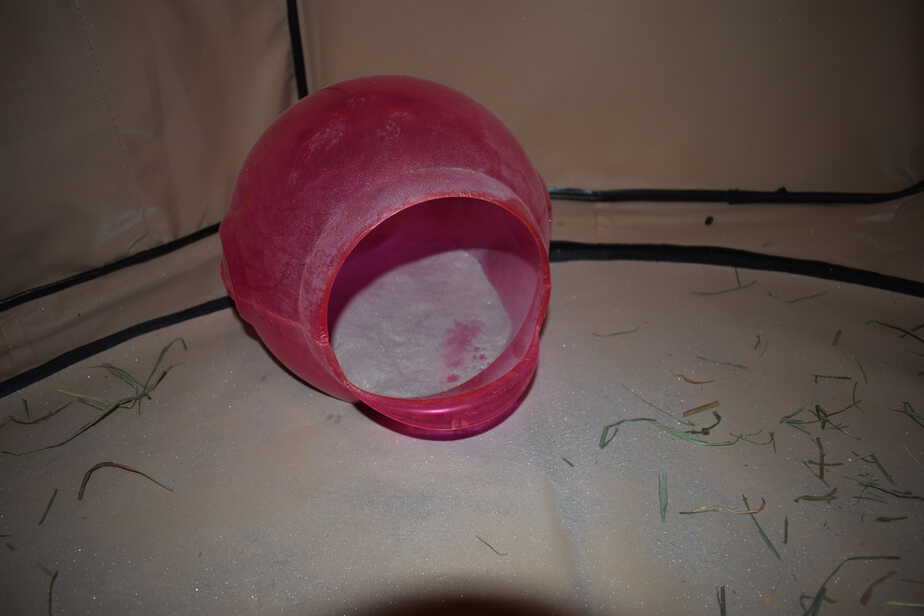
Lastly, always have your chinchilla dust bath handy. If you start training your chinchilla when it is young by tapping on the dust bath when it’s time to bathe, it will begin associating this tapping noise with something that it loves (the dust bath).
If your chinchilla does ever happen to get out, you can place the dust bath on the floor and tap it, to see if you can coax your pet out of its hiding spot.
You may need to be patient when you do this. Your chin may not come out immediately. It’s a game of actively looking, but also waiting patiently to see if your chinchilla returns.
This has worked for me, and I’ve read on a lot of other forums that others have success with this trick as well. I feel very comfortable suggesting this as an excellent option to locate your lost chinchilla.
And of course, do not forget to try offering treats to get your chinchilla out of hiding.
The First Few Weeks Are Prime Run-Away Time
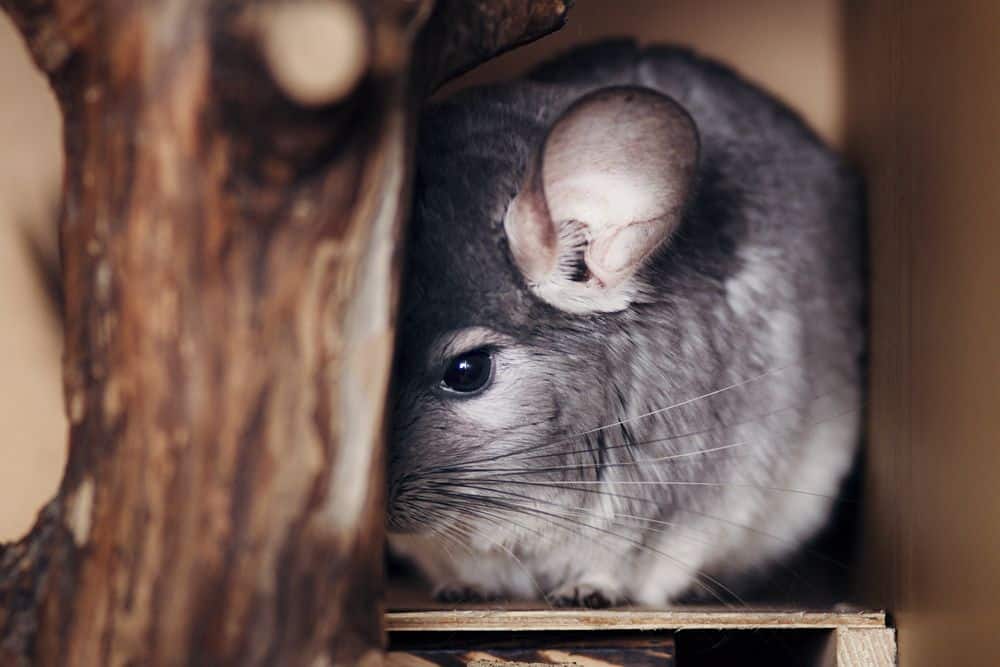
During the first week home, your chinchilla is going to be very scared and full of anxiety. It’s best to just allow it to stay in the cage during this time.
This helps eliminate unnecessary stress and dramatically reduces the chances of your chinchilla running away and hiding.
Your pet needs to get used to all the sounds and smells of its new surroundings.
Plus, if it happened to run away during this initial week, it would be much harder to lure it out with a dust bath. It won’t yet have associated the tapping with bath time.
And it will most likely be terrified and find a hiding spot that is tough to locate. You may end up searching for hours upon hours, before seeing your pet again. If ever.
I’ve heard plenty of stories of owners not finding their pets for over a day. So if yours does run away, make sure to leave something to eat out for it, just in case you miss it coming out of hiding.
You don’t want your chin starving and at least want to attempt to keep it fed, until you can eventually lure it back to safety.
Close as many exterior doors as possible and even the entrance to the room where you know it is lost, so that you don’t have to expand the search area.
The smaller the space you need to cover, the better the chances you are able to locate a chinchilla that has run away and is hiding.
Chinchillas Can Run Away: Final Thoughts
At the end of the day, you have plenty of steps you can take to actively protect your chinchilla from running away.
And if it runs away anyway, there are plenty of things you can do to try and locate it as fast as possible.
Still, be prepared to search for hours, if your chinchilla does run away. And be very careful not to allow it to get outside.
Once they get out of the house, they’re likely gone forever. I honestly don’t know any tricks to bring them back to safety.
Chili and I wish you the best of luck with your new chinchilla and hope you never have any issues with your chinchilla running.
Now we want to hear from you!
Do you have any experience with a chinchilla running away or hiding?
Do you use chinchilla gates or playpens to make a room safer to avoid these issues?
Be sure to share your thoughts, stories, and concerns by dropping a comment below.
As always, Chili and I appreciate you stopping by and reading today and we will see you again next time!

Leave a Reply